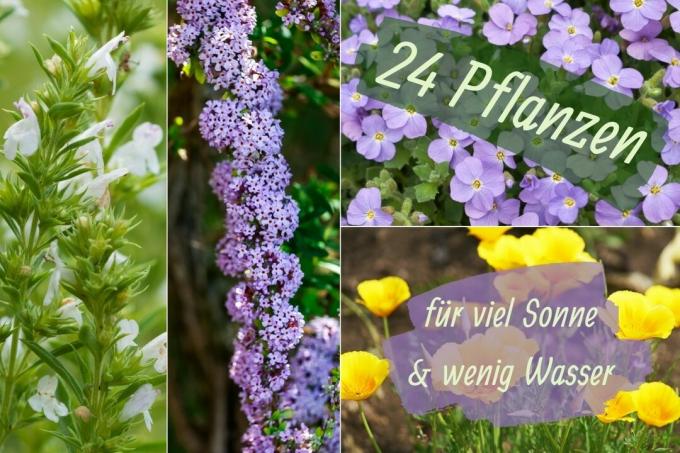
table of contents
- flower
- Ground cover
- Trees and shrubs
- Grasses
- Cacti and succulents
- Perennials
- frequently asked Questions
Fully sunny and at the same time dry locations in the garden are difficult to plant. We introduce you to 24 plants that need a lot of sun and little water and are still wonderful to look at.
In a nutshell
- large selection of summer flowers and perennials
- Cacti and succulents also work well
- extremely resistant to sun and drought v. a. Houseleek
- many types of grass for the rock garden
- Mediterranean herbs perfect for lots of sun and little water
flower
Lavishly blooming summer flowers should not be missing in any garden. These species need a lot of sun and get by with little water.
Gold poppy (Eschscholzia californica)
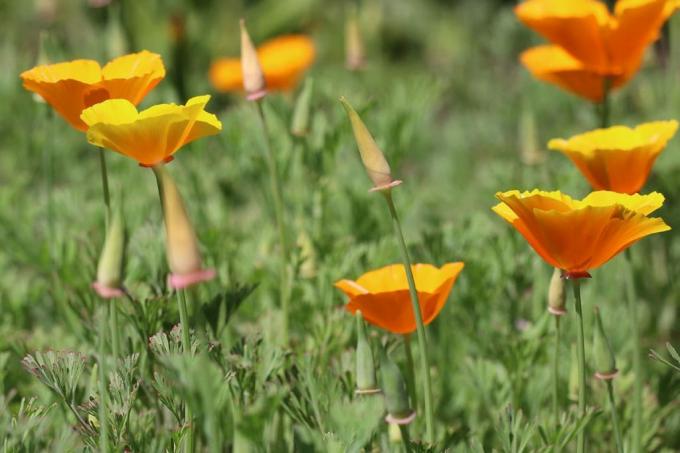
- Growth: upright, bushy
- Height: 30 to 40 centimeters
- Flower: yellow or orange cup-shaped flowers
- Flowering period: June to October
- Special features: annual
Levkoje (Matthiola incana)
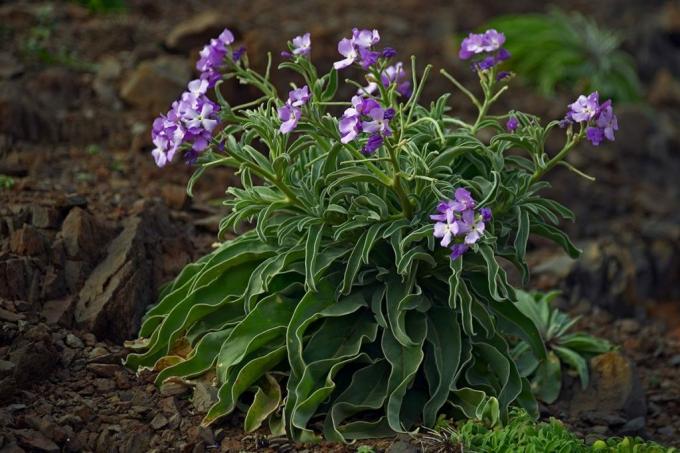
- Growth: upright, bushy, dense
- Height: 20 to 80 centimeters
- Blossom: many grape blossoms in red, pink, purple, yellow or white
- Flowering period: June to September
- Special features: annual
Note: Levkojen come in many varieties with double and unfilled flowers. The varieties 'Dresdener Splendid Mix' and 'Mammut Excelsior Mix' bloom particularly beautifully.
Purslane florets (Portulaca grandiflora)
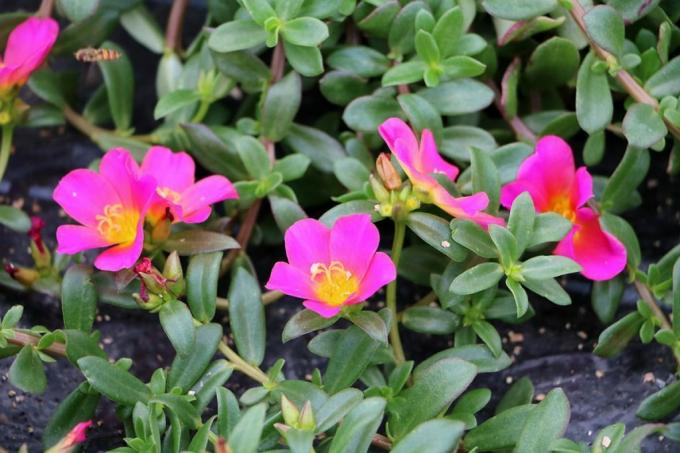
- Growth: carpet-forming, flat-growing
- Height: 10 to 15 centimeters
- Blossom: Cup flowers in many colors, also multicolored
- Flowering period: June to August
- Special features: annual
Note: The purslane florets, which originate from South America, have colorful silk flowers that can be unfilled or filled. They are perfect as a flower-rich eye-catcher in the rock garden.
Gypsophila (gypsophila elegans)
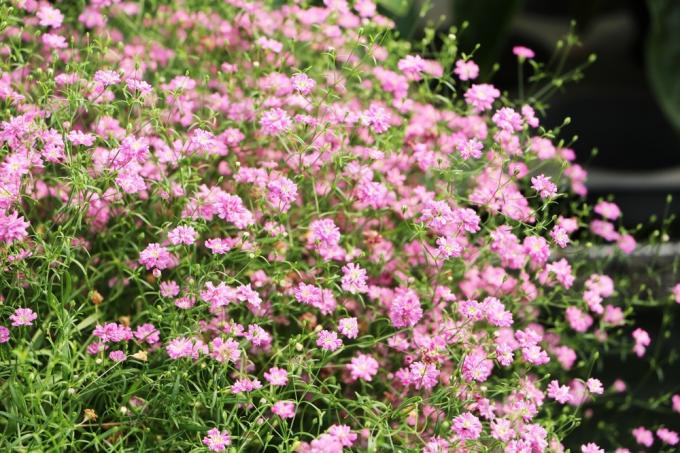
There are two different types of gypsophila, both of which need lots of sun and little water. The giant gypsophila (Gypsophila paniculata) grows up to a meter high and just as wide. It is covered with hundreds of small, airy panicle flowers between June and September. The carpet's gypsophila (Gypsophila repens) also blooms very profusely, but only grows to about 25 centimeters. There are different varieties of both species with white or pink, single or double flowers.
Ground cover
Ground covers are ideal for planting dry stone walls, rock gardens or even slopes.
Blue pillow (Aubrieta hybrids)
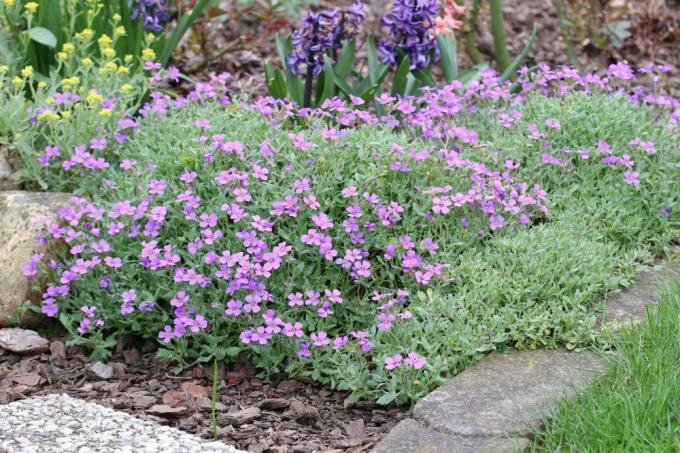
- Growth: cushion-forming, dense
- Height: 8 to 15 centimeters
- Blossom: cup-shaped flowers in red, pink, violet, blue or white
- Flowering period: April to May
- Special features: perennial
Note: The blue pillow is a valuable pollen and nectar plant for numerous insects.
Woolen ziest (Stachys byzantina)
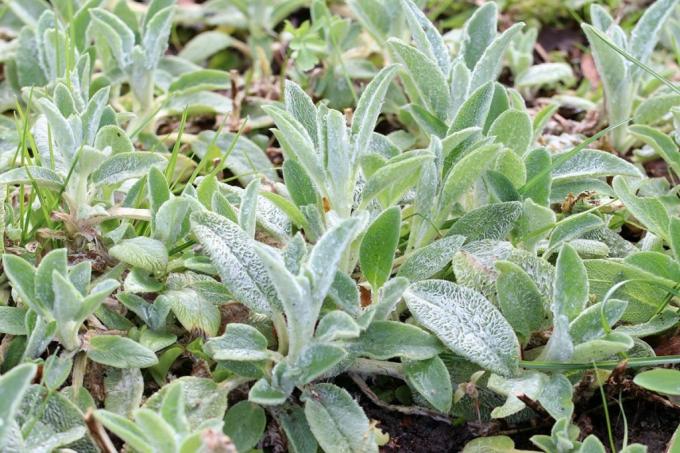
- Growth: cushion-forming, upright
- Height: 15 to 60 centimeters
- Blossom: whorls in red or pink
- Flowering period: June to August
- Special features: felty, evergreen leaves
Trees and shrubs
Shrubs are easy to care for and also fit in small gardens.
Beard flower (Caryopteris clandonensis)
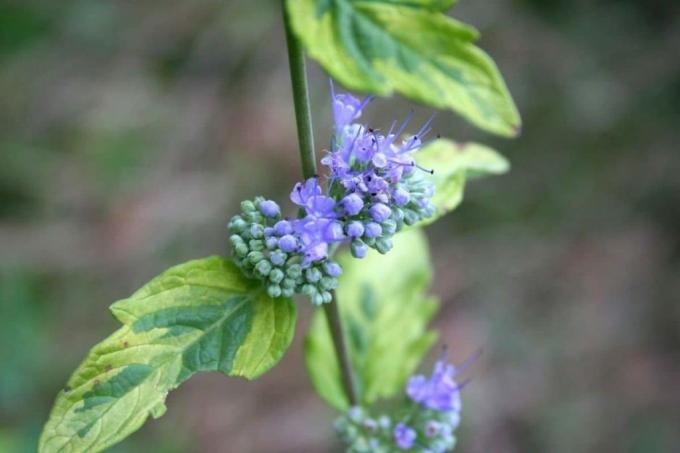
- Habit: upright subshrub
- Height: 80 to 100 centimeters
- Flower: blue clusters of flowers
- Flowering period: July to September
- Special features: valuable nectar or pollen plant
Tip: The popular 'Heavenly Blue' variety blooms particularly beautifully.
Blue rue (Perovskia atriplicifolia)

- Habit: loose subshrub
- Height: 100 to 200 centimeters
- Flower: blue or purple panicle flowers
- Flowering period: August to September
- Special features: intensely fragrant leaves
Alternate-leaved Buddleia (Buddleja alternifolia)
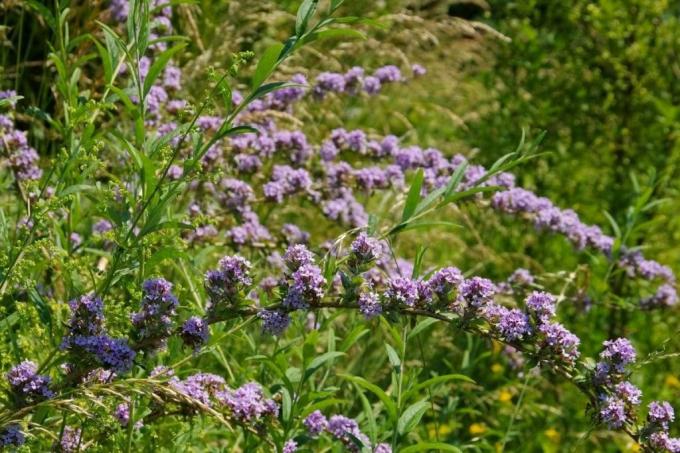
- Growth: overhanging
- Height: 200 to 400 centimeters
- Flower: large inflorescences in purple, pink or white
- Flowering period: June to September
- Special features: valuable pollen and nectar plants
Note: The buddleia is also known as butterfly lilac and is not related to the common lilac (Syringa).
Grasses
Many grasses are predestined for locations with a lot of sun and usually only need little water. They can be wonderfully combined with flowering perennials and create variety in the sun bed.
Blue ray oats (Helictotrichon sempervirens)

- Growth: clump-forming, upright
- Height: 30 to 120 centimeters
- Flower: green-yellow flower panicles
- Flowering period: June to August
- Leaves: evergreen, silver-gray to blue-gray
- Special features: hardy
Blue fescue (Festuca glauca)
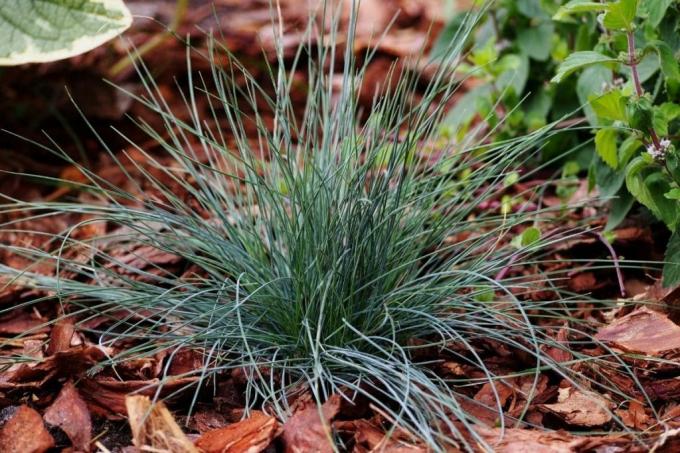
- Formation of clumps and cushions
- Height: 15 to 30 centimeters
- Flower: green-yellow flower panicles
- Flowering period: June to July
- Leaves: narrow, pointed, blue-green
- Special features: evergreen
Pennisetum alopecuroides

- Growth: clump-forming, overhanging
- Height: 30 to 150 centimeters
- Flowers: white, brown or pink, spikes
- Flowering period: August to October
- Leaves: narrow
- Special features: beautiful autumn colors
Note: The lamp-cleaning grass has its name for a reason: the attractive, feathery brush blossoms were once actually used to clean lamps. The plant is also known as feather bristle grass.
Rainbow fescue (Festuca amethystina)
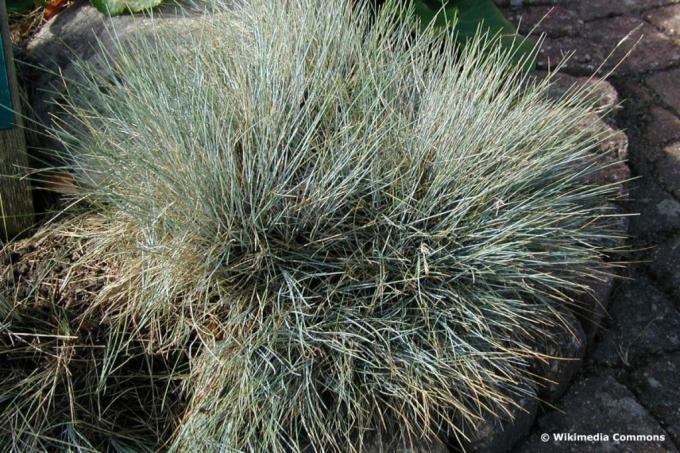
- Growth: clump-forming, overhanging
- Height: 25 to 60 centimeters
- Flower: red or purple flower panicles
- Flowering period: June to July
- Leaves: blue-green hair leaves
- Special features: native species
Note: The fine hair leaves of the rainbow fescue turn a striking purple color after flowering. The plant reproduces easily by self-sowing.
Switchgrass (Panicum virgatum)

- Growth: clump-forming, upright
- Height: 60 to 210 centimeters
- Flower: brown panicle flowers
- Flowering period: July to September
- Leaves: narrow, green
- Special features: beautiful autumn colors
Note: The easy-care and undemanding switchgrass is particularly popular because of its spectacular autumn colors. The color palette ranges from golden yellow to copper red.
Schiller grass (Koeleria glauca)
The native blue-green Schillergrass grows in nature on inland dunes, sandy grasslands and can also be found in sandy pine forests. It takes a lot of sun and little water.
- Growth: clump-forming, dense
- Height: 15 to 30 centimeters
- Blossom: green-yellow to brownish panicles
- Flowering period: June to July
- Leaves: green to blue-green
- Special features: evergreen
Cacti and succulents
Succulent plants store water in their leaves, shoots and branches - so it's no wonder that they only need a little water. They often come from regions where there is a lot of sun.
Houseleek (Sempervivum)

Houseleek, also known as stone rose, is highly heat and drought resistant and grows where other plants can hardly stand it. The thick leaf plant needs a lot of sun and extremely little water. In addition, the variety of species and varieties is huge: there are around 60 different species with 5000 different varieties.
Spurge (Euphorbia)

The hardy cruciferous milkweed (Euphorbia lathyris) is particularly suitable for the garden. The species grows to about 80 centimeters high and has a very decorative effect due to its nicely shaped, blue-green leaves. It also keeps voles away, which is why you should plant them in the vegetable patch or near endangered plants. But be careful: like all milkweed plants, this one is also poisonous.
Perennials
There is a particularly large selection of sun-hungry and drought-resistant plants among the perennials. This group of plants is perennial and sprouts anew every year.
Scented nettle (Agastache rugosa)
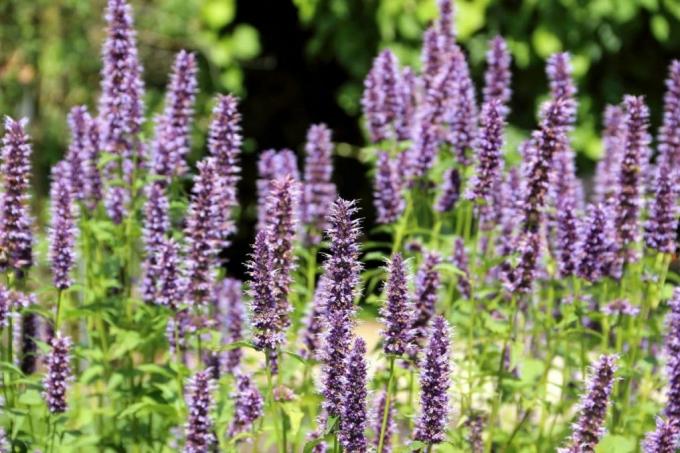
- Growth: upright, bushy, clump-forming
- Height: 80 to 100 centimeters
- Flower: purple false spikes
- Flowering period: June to September
- Special features: insect magnet, valuable nectar or pollen plant
Tip: The scented nettle attracts numerous insects, especially butterflies and bees. Therefore, it should not be missing in any garden.
Verbena (Verbena bonariensis)
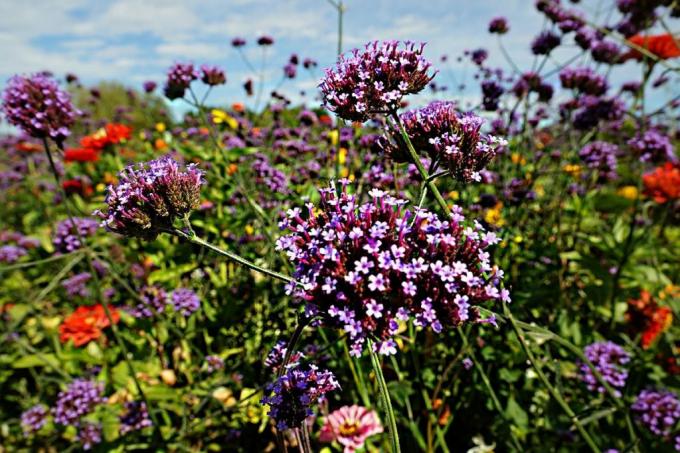
- Growth: upright
- Height: 150 to 200 centimeters
- Flower: purple umbels
- Flowering period: July to October
- Special features: not sufficiently winter hardy
Tip: Verbena, which comes from South America, freezes back in winter, but sows itself anew every year and therefore comes back reliably.
Evergreen candytuft (Iberis sempervirens)
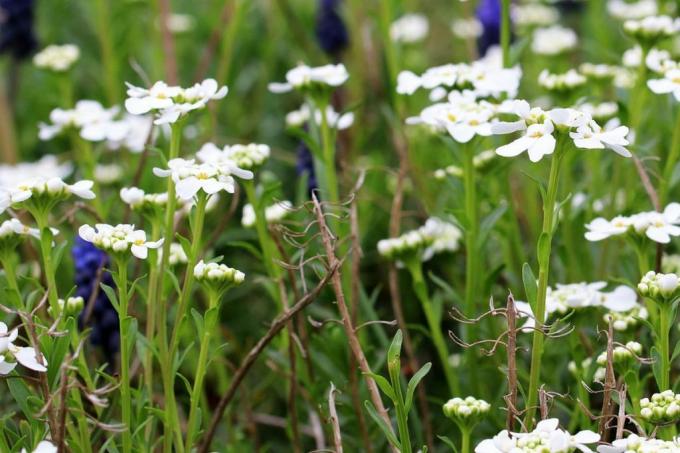
- Growth: dense, cushion-forming
- Height: 15 to 40 centimeters
- Flower: white umbels
- Flowering period: April to May
- Special features: very adaptable, tolerates stony to loamy soil
Catnip (Nepeta faassenii)
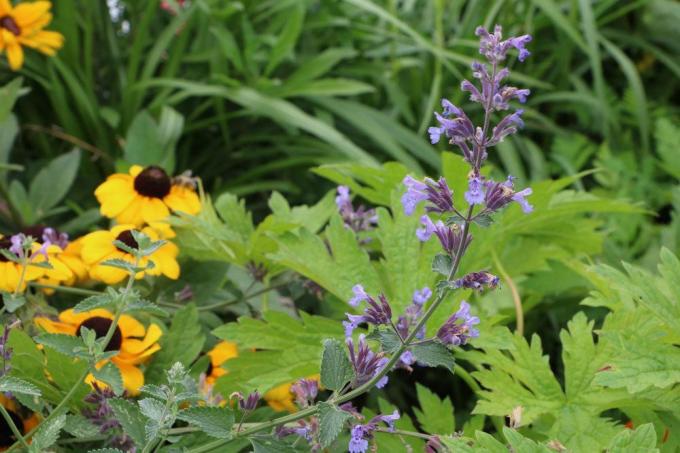
- Growth: loose, bushy
- Height: 20 to 30 centimeters
- Flowers: purple to blue spike-flowers
- Flowering period: May to September
- Special features: valuable bee pasture
Little man litter (Eryngium planum)
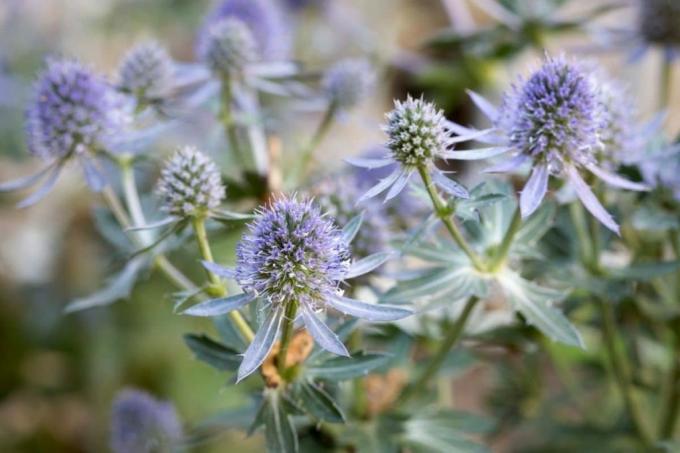
- Growth: clump-forming, upright
- Height: 40 to 80 centimeters
- Flower: blue umbellate flowers
- Flowering period: July to September
- Special features: native wild plant
Tip: The species is sometimes referred to as "noble thistle" because it is visually reminiscent of thistles.
Sun hat (Echinacea purpurea)
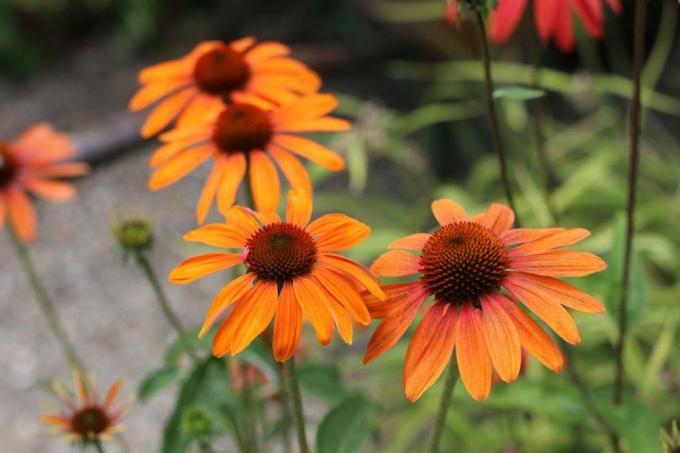
- Growth: upright, clump-forming
- Height: 80 to 100 centimeters
- Blossom: flower heads in many colors, v. a. red and purple
- Flowering period: July to September
- Special features: medicinal plant
Tip: The species is also commercially available as a purple coneflower.
Stone Quendel (Calamintha nepeta)
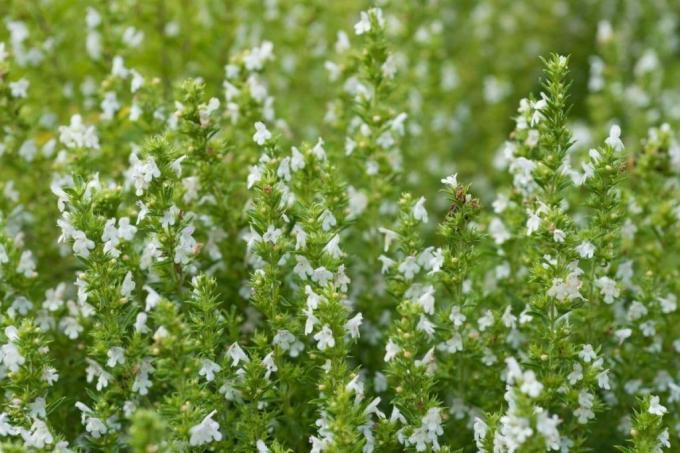
- Growth: upright, clump-forming
- Height: 30 to 50 centimeters
- Flower: purple or white lip-shaped flowers
- Flowering period: July to October
- Special features: permanently blooming
frequently asked Questions
Mediterranean herbs in particular need little water and therefore prefer a dry location. At the same time, a lot of sun is necessary for the development of the characteristic aroma. Lavender, rosemary, thyme, sage, oregano or marjoram are particularly suitable for such a location.
Local wild roses such as the robust potato or apple rose are suitable here (Rosa rugosa), the felt rose (Rosa tomentosa) and above all the beaver's rose (Rosa spinosissima) very good. The latter is also known as rock or dune rose and grows in stony, dry locations.
On a south-facing balcony it is very sunny, hot - and, if you don't want to keep watering, very dry. The plants mentioned are suitable here, but above all heat-loving plants such as geraniums, petunias, bougainvillea, oleanders, citrus plants and hibiscus.



